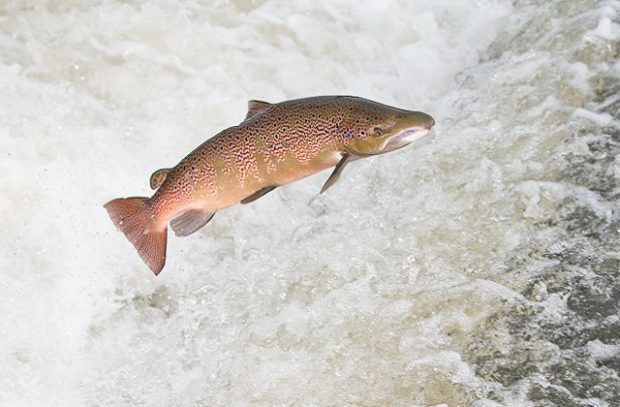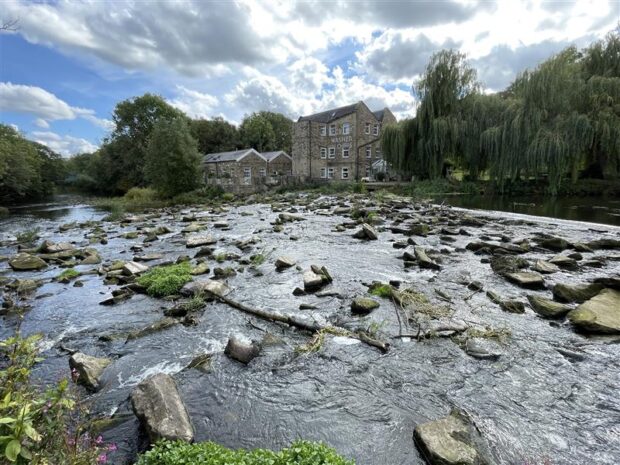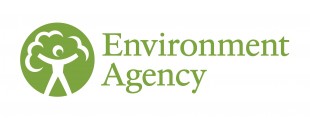The Environment Agency has published the latest Atlantic salmon stock assessment for England, providing insights into the health of our salmon populations. The results, based on 2024 data, confirm that salmon stocks remain at critically low levels, underscoring the urgent need for continued and coordinated conservation action.
Current Status
The 2024 assessment data reveals that 88% of England's principal salmon rivers are classified as 'at risk' or 'probably at risk' - a figure that remains largely unchanged from previous years.
Only a small number of rivers achieved the conservation egg deposition targets necessary for healthy salmon populations, highlighting the urgent need for continued conservation action. Encouraging signs emerge from the angling community's commitment to conservation, with catch and release practices helping to protect returning spawners and contribute to future breeding populations.

Understanding the Challenge
Atlantic salmon are remarkable fish that spend their early years in freshwater before migrating to the ocean to mature, eventually returning to their birth rivers to spawn. This complex lifecycle, spanning both freshwater and marine environments, makes them particularly vulnerable to environmental pressures.
The decline in salmon populations, from around 1.4 million adult fish returning in the 1970s-1980s to fewer than 500,000 today across the UK, reflects multiple interconnected challenges. These include reduced marine survival, poor water quality, climate change impacts, migration barriers from historic infrastructure, and habitat degradation.
Salmon serve as vital indicators of river and marine ecosystem health. Their decline signals broader environmental challenges that affect not just this species, but entire aquatic ecosystems and the communities that depend on them.
The Environment Agency’s Response
As the statutory body responsible for maintaining and improving salmon fisheries, the Environment Agency is taking comprehensive action across multiple fronts.
We're scaling up our regulatory work, increasing farm inspections from 4,000 to 6,000 annually to tackle agricultural pollution – the biggest cause of poor water quality in England. We’re also increasing water company inspections from 1,409 in 2022/23 to over 4,000 in 2024/25, with a target of 10,000 by March 2026. We're working with farmers and water companies providing guidance and support whilst taking enforcement action where necessary.
Physical barriers to fish migration are being systematically removed through collaborative partnerships. The 'Unlocking the Severn' project reopened 158 miles of river, while decades of partnership work across Yorkshire has achieved a remarkable milestone - the first Atlantic salmon parr recorded in the River Don in over 200 years. These successes demonstrate the effectiveness of long-term collaborative conservation efforts and support the Great Yorkshire Rivers partnership's ambitious aim of addressing artificial barriers negatively impacting fish populations in Yorkshire.
We're also investigating innovative solutions, such as our current study on the River Itchen to improve juvenile salmon migration past water control structures.

A Collaborative Effort
Salmon conservation cannot succeed through the efforts of any single organisation. It requires extensive collaboration across sectors and stakeholders.
We continue to work with water companies to reduce pollution incidents and improve compliance with environmental standards. The angling community has embraced catch and release practices, helping protect returning spawners. Agricultural stakeholders are working with us to implement better environmental practices.
Internationally, we collaborate through the North Atlantic Salmon Conservation Organisation (NASCO) to address challenges in marine environments, recognising that salmon conservation is a transnational issue requiring coordinated responses.
Local communities, conservation groups, and volunteers contribute through habitat restoration projects, citizen science initiatives, and advocacy for stronger environmental protections.
Looking Forward
While salmon stocks remain at concerning levels, there are examples of progress. The River Don's story shows that even rivers long considered lost can support breeding salmon populations again.
Recovery will take time. Salmon's complex lifecycle means improvements may take years to reflect in population data. But every successful spawning event, every barrier removed, and every partnership forged contributes to the long-term goal of restoring sustainable salmon populations.
The 2024 assessment reinforces that protecting salmon requires sustained commitment from all sectors of society. As we continue this vital work, we remain focused on transparency, collaboration, and delivering meaningful environmental improvements.
The Environment Agency continues to monitor salmon populations closely and welcomes partnerships with organisations committed to salmon conservation. For more detailed data and findings from our monitoring work, read the Assessment of Salmon Stocks and Fisheries in England and Wales 2024.

10 comments
Comment by Kevin Sunderland posted on
Progress on removal of barriers to fish passage is painfully slow. It's not just a matter of locating funds to remove barriers or to build fish passes but also obtaining the permission from riparian owners to do so. One reluctant weir owner can mean that a whole river system is devoid of migratory fish.
In many cases main rivers are cut off from their tributaries by Environment Agency flow measuring weirs. If the EA cannot bring itself to get its own house in order, what chance does it have with other weir owners?
Action is required now on changing the laws governing weir removal. As we've seen in the past, a change of Government can lead to the scrapping of objectives and so called commitments to making improvements by the EA.
The Water Framework Directive for the Humber District had an objective of returning self sustaining salmon populations to all Yorkshire rivers by 2025. This was clarified by the EA to mean not just a handful of salmon ascending the rivers but a substantial run of fish each year. Odd juvenile fish have been found on the Don and the Calder but major barriers remain on most Yorkshire rivers.
Comment by SunPerp posted on
This article highlights the serious decline of salmon and the multifaceted efforts to address it. The emphasis on collaboration across sectors is crucial, but I wonder about the practical challenges in enforcing regulations and obtaining permissions for barrier removal. Its encouraging to see progress, but the pace feels too slow.
Comment by Scott Patterson posted on
Putting cormorants and goosander onto the general licence rather than having to apply for individual licenses would be of great benefit to all our inland fish stocks.
Cormorants are now feeding on migratory fish all the way inland to mountain spawning becks which was a very rare occurrence 20-30 years ago.
With them on the general licence this would also reduce the amount of work that natural England have, freeing up resources to more important environmental issues.
It’s a simple fix really.
Comment by Peter Ross posted on
I fished on one of the historically great rivers in the North West of England last week. A murderous flock of 150 cormorants were working all the areas where juvenile fish should be able to be quite safe, this level of predation is completely unsustainable. Simple maths says 150 birds, min 4 fish a day each , 600 per day between them, i.e. 18000 per month. Am I missing something or is this huge threat to fish survival being ignored by the EA ?
Comment by Chris Lock posted on
What a great shame that these fish are vanishing.
Comment by John bennett posted on
I fish in orthodox Yorkshire our club have taken the government to court and won but the water companies are slow in putting things right this is very concerning for our club and the fish. I cannot understand when the water authorities are told to plan ahead still try to stop things happening.
Comment by R Brown posted on
Many small rivers hold ,or held,small stocks of migratory fish but these rivers seems never to be mentioned,either by name or even region.When are the many West Country rivers like the Bride ,theFrome,the Stour,the Brit,the Char,The Axe,the Otter going to be given the recognition they deserve.?
Comment by Peter Hallum posted on
You fail to address smolt predator control. You do not appear to have the will to go up against the likes of Chris Packham whose ideology can not be applied to the plight of the salmon.
Comment by Phil Bullock posted on
Those commenting on pesky avian piscivorous predators are spot on. How can juvenile fish possibly survive the large numbers of fish eating ducks and cormorants present on upland rivers? Fish populations have flourished in the past in the presence of herons kingfishers and otters but not these pests….
Comment by Peter Hughes posted on
I had experienced great difficulties,achieving a response to a serious and ongoing pollution issue,and came to the conclusion that the mechanism for dealing with such, does not really exist,or does in a superficial role.
Although North America is experiencing its largest runs of salmon ever,Europe is a different story ,pollution is a serious issue,but the alledged landings by Green land and Iceland of a hundred and twenty tons of Salmon a week,is frightening,
A large proportion of oil fish is used to fortify soya ,making high neutricous